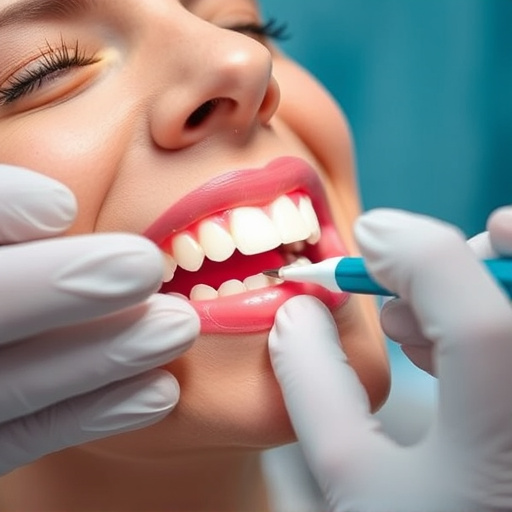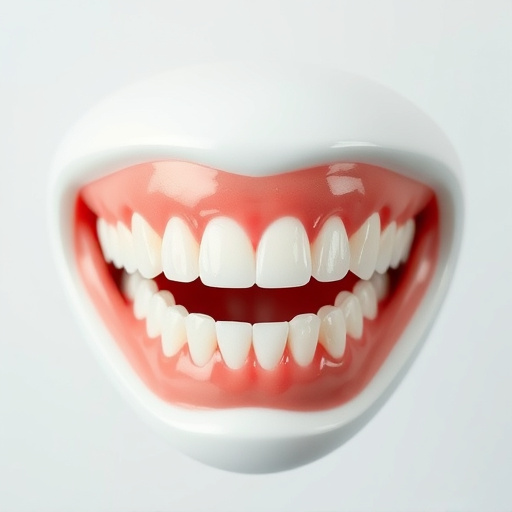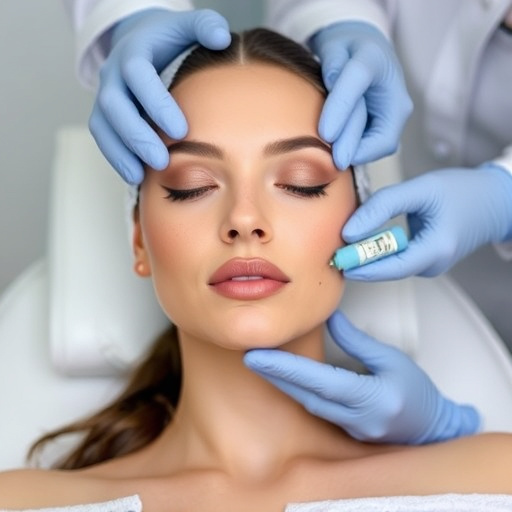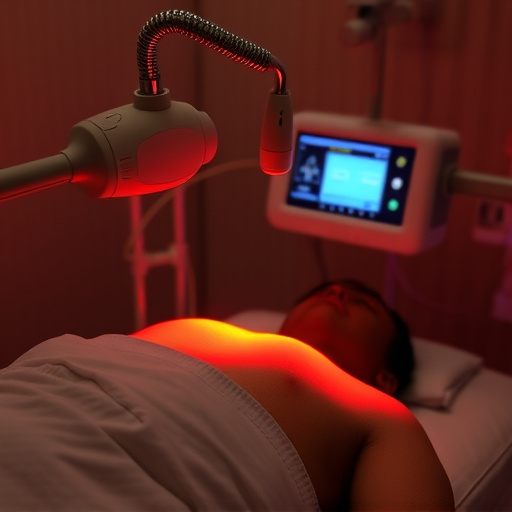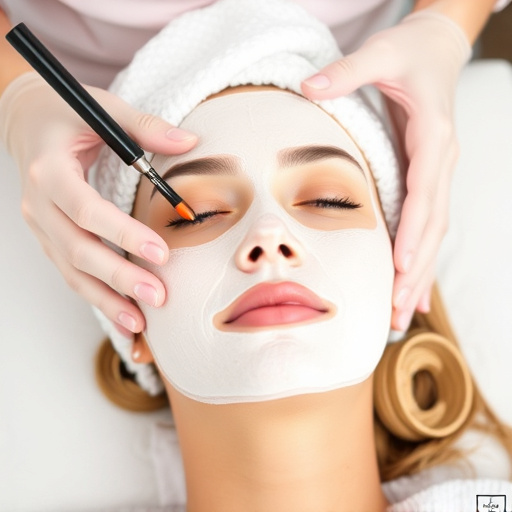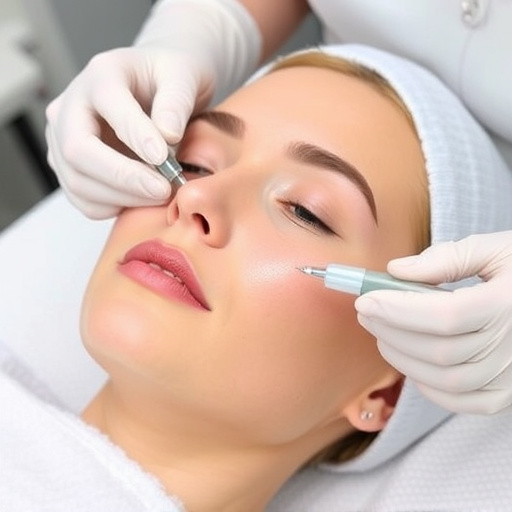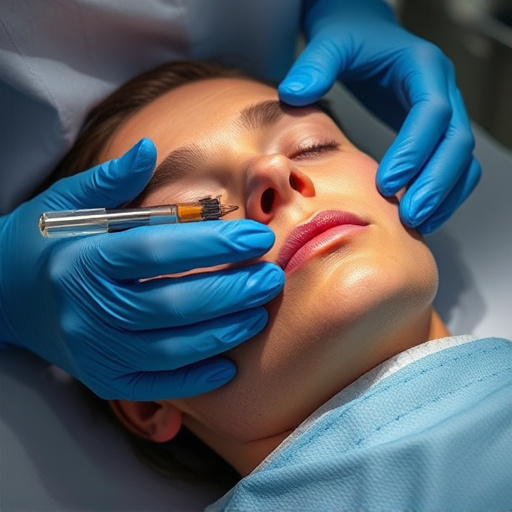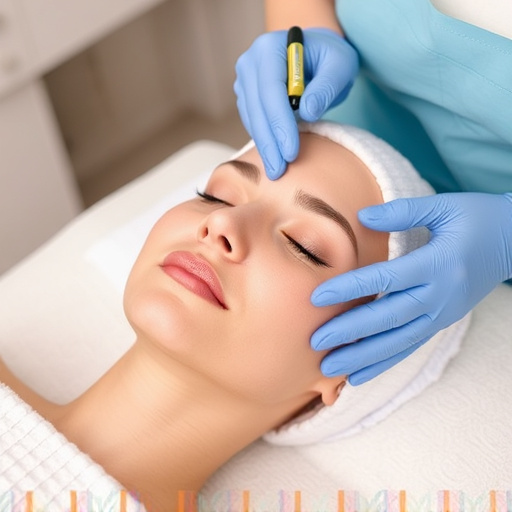Sun damage, caused by UV radiation, accelerates skin aging and increases cancer risk. OTC products, containing ingredients like hyaluronic acid, vitamin C, and niacinamide, offer accessible sun damage treatment for early signs of aging. Chemical peels, a stronger prescription option, provide faster results but require professional guidance and carry higher risks. Safe use is crucial for all methods, with individual results varying based on skin type and needs.
Sun damage, from UV rays, can cause premature aging, hyperpigmentation, and even skin cancer. Understanding how it affects your skin is crucial for effective sun damage treatment. Over-the-counter (OTC) products claim to repair and protect against these issues. This article explores popular OTC repair options, their effectiveness, and considerations for safe use, helping you navigate the market for optimal sun damage treatment.
- Understanding Sun Damage and Its Impact
- Exploring Over-the-Counter Repair Options
- Effectiveness and Considerations for Safe Use
Understanding Sun Damage and Its Impact

Sun damage is a significant concern for many individuals, as the sun’s ultraviolet (UV) radiation can have detrimental effects on the skin over time. Exposure to UV rays can lead to premature aging, with symptoms such as fine lines, wrinkles, and age spots becoming more pronounced. Moreover, prolonged sun exposure increases the risk of developing skin cancer, making sun damage repair a crucial aspect of skincare. Understanding these impacts is essential for recognizing the need for effective sun damage treatment.
The effects of sun damage go beyond visible signs of aging. UV radiation can penetrate deep into the skin layers, causing collagen and elastin fibers to break down, resulting in loss of skin elasticity and firmness. This process contributes to the formation of wrinkles and a dull, uneven skin tone. Anti-aging treatments, including non-surgical options like topical creams and serums, have gained popularity as people seek ways to combat these effects. Body contouring, while often associated with surgical procedures, also offers non-invasive alternatives for those aiming to enhance their overall skin texture and appearance following sun damage.
Exploring Over-the-Counter Repair Options

Over-the-counter (OTC) products have become increasingly popular for sun damage treatment, offering a range of repair options to cater to various skin types and concerns. These products are designed to provide an accessible and affordable way to address sunburns, premature aging, and other signs of UV exposure without the need for a medical spa visit. One common active ingredient in OTC sun damage treatments is hyaluronic acid, which has excellent moisturizing properties and can help replenish the skin’s natural hydration levels after sun exposure.
Additionally, many OTC creams and serums contain antioxidants like vitamin C or niacinamide to combat free radicals generated by UV rays, promoting overall skin health. While these products may not offer the intensity of medical spa services for acne treatments, they are often effective in reversing early signs of sun damage and maintaining a youthful complexion. The key lies in choosing products with proven ingredients that match your specific needs, whether it’s reducing hyperpigmentation or smoothing fine lines caused by prolonged sun exposure.
Effectiveness and Considerations for Safe Use

Over-the-counter (OTC) products have gained popularity as a go-to option for sun damage treatment, offering convenient and accessible solutions. However, when it comes to effectiveness, it’s essential to consider that OTC products vary greatly in potency and active ingredients. Many creams and serums contain antioxidants, hyaluronic acid, or retinoids, which can help reduce the appearance of sunspots and improve skin texture. These ingredients work by neutralizing free radicals, hydrating the skin, and encouraging cell turnover, respectively. While these products show promise in clinical trials for skin brightening and pore refinement, individual results may vary.
Safe use is a crucial consideration when opting for OTC sun damage repair treatments. It’s important to follow the product instructions carefully and be mindful of potential side effects. Some individuals might experience mild irritation or dryness, especially if they have sensitive skin. Additionally, certain active ingredients like retinoids can make the skin more susceptible to sunburn, so using sunscreen during the day is mandatory. Chemical peels, a stronger option available by prescription, offer deeper penetration and faster results but carry a higher risk of side effects and require professional guidance.
While over-the-counter products can offer some assistance in sun damage repair, it’s crucial to remember that they are not a cure-all. When used as part of a comprehensive approach including protection from further UV exposure and healthy skin care habits, these products can help improve the appearance of sun-damaged skin. However, individual results vary, and consulting with a dermatologist is always recommended for more severe cases or if concerns persist. Prioritizing sun damage treatment involves both at-home care and professional guidance for optimal outcomes.


